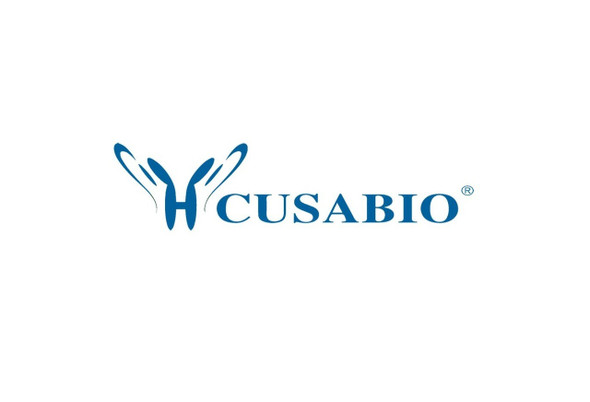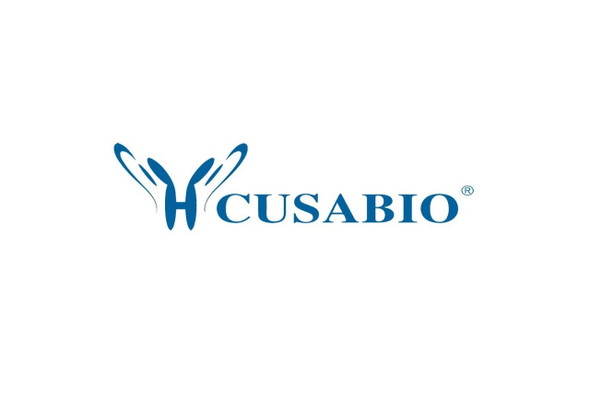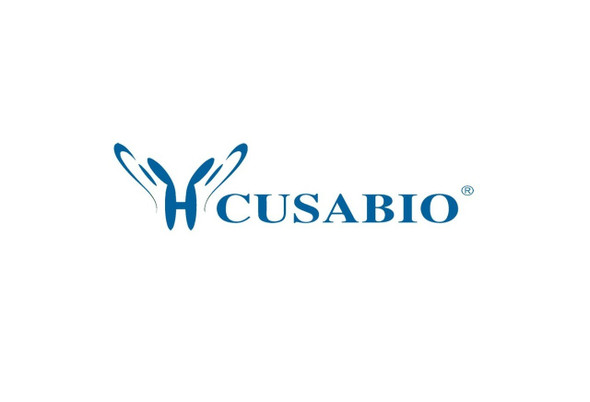Cusabio Human Recombinants
Recombinant Human Protein phosphatase 1 regulatory subunit 11 (PPP1R11) | CSB-RP038344h
- SKU:
- CSB-RP038344h
- Availability:
- 13 - 23 Working Days
Description
Recombinant Human Protein phosphatase 1 regulatory subunit 11 (PPP1R11) | CSB-RP038344h | Cusabio
Alternative Name(s): Hemochromatosis candidate gene V protein ;HCG VProtein phosphatase inhibitor 3
Gene Names: PPP1R11
Research Areas: Others
Organism: Homo sapiens (Human)
AA Sequence: MAEAGAGLSETVTETTVTVTTEPENRSLTIKLRKRKPEKKVEWTSDTVDNEHMGRRSSKCCCIYEKPRAFGESSTESDEEEEEGCGHTHCVRGHRKGRRRATLGPTPTTPPQPPDPSQPPPGPMQH
Source: E.coli
Tag Info: N-terminal GST-tagged
Expression Region: 1-126aa
Sequence Info: Full Length
MW: 41 kDa
Purity: Greater than 90% as determined by SDS-PAGE.
Relevance: Inhibitor of protein phosphatase 1.
Reference: Homo sapiens 2,229,817bp genomic DNA of 6p21.3 HLA class I region.Shiina S., Tamiya G., Oka A., Inoko H.Genome diversity in HLA a new strategy for detection of genetic polymorphisms in expressed genes within the HLA class III and class I regions.Shiina T., Ota M., Takasu M., Katsuyama Y., Hashimoto N., Tokunaga K., Inoko H. The DNA sequence and analysis of human chromosome 6.Mungall A.J., Palmer S.A., Sims S.K., Edwards C.A., Ashurst J.L., Wilming L., Jones M.C., Horton R., Hunt S.E., Scott C.E., Gilbert J.G.R., Clamp M.E., Bethel G., Milne S., Ainscough R., Almeida J.P., Ambrose K.D., Andrews T.D. , Ashwell R.I.S., Babbage A.K., Bagguley C.L., Bailey J., Banerjee R., Barker D.J., Barlow K.F., Bates K., Beare D.M., Beasley H., Beasley O., Bird C.P., Blakey S.E., Bray-Allen S., Brook J., Brown A.J., Brown J.Y., Burford D.C., Burrill W., Burton J., Carder C., Carter N.P., Chapman J.C., Clark S.Y., Clark G., Clee C.M., Clegg S., Cobley V., Collier R.E., Collins J.E., Colman L.K., Corby N.R., Coville G.J., Culley K.M., Dhami P., Davies J., Dunn M., Earthrowl M.E., Ellington A.E., Evans K.A., Faulkner L., Francis M.D., Frankish A., Frankland J., French L., Garner P., Garnett J., Ghori M.J., Gilby L.M., Gillson C.J., Glithero R.J., Grafham D.V., Grant M., Gribble S., Griffiths C., Griffiths M.N.D., Hall R., Halls K.S., Hammond S., Harley J.L., Hart E.A., Heath P.D., Heathcott R., Holmes S.J., Howden P.J., Howe K.L., Howell G.R., Huckle E., Humphray S.J., Humphries M.D., Hunt A.R., Johnson C.M., Joy A.A., Kay M., Keenan S.J., Kimberley A.M., King A., Laird G.K., Langford C., Lawlor S., Leongamornlert D.A., Leversha M., Lloyd C.R., Lloyd D.M., Loveland J.E., Lovell J., Martin S., Mashreghi-Mohammadi M., Maslen G.L., Matthews L., McCann O.T., McLaren S.J., McLay K., McMurray A., Moore M.J.F., Mullikin J.C., Niblett D., Nickerson T., Novik K.L., Oliver K., Overton-Larty E.K., Parker A., Patel R., Pearce A.V., Peck A.I., Phillimore B.J.C.T., Phillips S., Plumb R.W., Porter K.M., Ramsey Y., Ranby S.A., Rice C.M., Ross M.T., Searle S.M., Sehra H.K., Sheridan E., Skuce C.D., Smith S., Smith M., Spraggon L., Squares S.L., Steward C.A., Sycamore N., Tamlyn-Hall G., Tester J., Theaker A.J., Thomas D.W., Thorpe A., Tracey A., Tromans A., Tubby B., Wall M., Wallis J.M., West A.P., White S.S., Whitehead S.L., Whittaker H., Wild A., Willey D.J., Wilmer T.E., Wood J.M., Wray P.W., Wyatt J.C., Young L., Younger R.M., Bentley D.R., Coulson A., Durbin R.M., Hubbard T., Sulston J.E., Dunham I., Rogers J., Beck S.Nature 425:805-811(2003)
Storage: The shelf life is related to many factors, storage state, buffer ingredients, storage temperature and the stability of the protein itself. Generally, the shelf life of liquid form is 6 months at -20?/-80?. The shelf life of lyophilized form is 12 months at -20?/-80?.
Notes: Repeated freezing and thawing is not recommended. Store working aliquots at 4? for up to one week.
Function: Atypical E3 ubiquitin-protein ligase which ubiquitinates TLR2 at 'Lys-754' leading to its degradation by the proteasome. Plays a role in regulating inflammatory cytokine release and gram-positive bacterial clearance by functioning, in part, through the ubiquitination and degradation of TLR2
Involvement in disease:
Subcellular Location:
Protein Families:
Tissue Specificity: Widely expressed.
Paythway:
Form: Liquid or Lyophilized powder
Buffer: If the delivery form is liquid, the default storage buffer is Tris/PBS-based buffer, 5%-50% glycerol. If the delivery form is lyophilized powder, the buffer before lyophilization is Tris/PBS-based buffer, 6% Trehalose, pH 8.0.
Reconstitution: We recommend that this vial be briefly centrifuged prior to opening to bring the contents to the bottom. Please reconstitute protein in deionized sterile water to a concentration of 0.1-1.0 mg/mL.We recommend to add 5-50% of glycerol (final concentration) and aliquot for long-term storage at -20?/-80?. Our default final concentration of glycerol is 50%. Customers could use it as reference.
Uniprot ID: O60927
HGNC Database Link: HGNC
UniGene Database Link: UniGene
KEGG Database Link: KEGG
STRING Database Link: STRING
OMIM Database Link: OMIM










